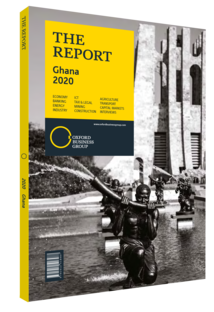Ernest Addison, Governor, Bank of Ghana: Interview

Interview: Ernest Addison
How have higher capital requirements helped to stabilise the banking system?
ERNEST ADDISON: The higher capitalisation requirements are part of a holistic reform to address vulnerabilities in the banking sector. An asset quality review of banks undertaken by the Bank of Ghana in 2015-16 revealed severe challenges in solvency, liquidity and asset quality, alongside substantial under-provisioning and capital shortfalls in some banks. The increase in capital requirements was implemented to raise the low capital base of banks, address the solvency and liquidity challenges, provide capital buffers to mitigate risks in line with Basel II and III requirements, and strengthen the capacity of banks to effectively intermediate. The Bank of Ghana’s assessments suggest that this has been successful in removing the vulnerabilities that threatened the stability of the sector. After a period of consolidation, the industry today has 23 strong banks with substantial capital. Following the exercise, all the key financial soundness indicators – solvency, liquidity, efficiency and asset quality – have improved. The provision of capital buffers by banks under the Basel II and III framework has also ensured that banks are more resilient to shocks. Additional supervisory and regulatory directives, such as those on corporate governance, financial holding companies and the voluntary winding up of financial institutions, will further enhance the stability and soundness of the sector.
What were the key causes of the high non-performing loan (NPL) ratio, and how do you expect lending rates to develop in the near term?
ADDISON: Lending rates have remained rather high for some time now, reflecting to some extent the uncompetitive banking environment and high NPL ratio. The high number of NPLs curbed a decline in lending rates, even with monetary policy easing. The prevalence of these factors has prompted a slight shift from advances to investment in government securities since 2015. We believe that over time reforms and recapitalisation should provide a strong basis for enhancing competition and efficiency in the sector, which will help lower lending rates. In addition, the gradual reduction in NPLs through loan write-offs, ongoing recovery efforts and the strengthening of banks’ risk management systems should help reduce risk premiums and further lower lending rates. We anticipate that with macro stability and a reduction in NPLs, banks will be in a better position to lower lending rates and increase credit.
In what ways has the clean-up of the microfinance segment affected rural banking?
ADDISON: Efforts to strengthen specialised deposit-taking institutions (SDIs) resulted in the recent revocation of the licences of 347 insolvent microfinance and 39 insolvent micro-credit companies. The receivership and liquidation of these institutions are in progress and depositors’ claims are being validated and paid. Specifically, the clean-up within the different tiers of the SDI segment – savings and loans, rural community banks (RCBs), and microfinance and micro-credit institutions – is directed at insolvent institutions that are not able to meet depositor withdrawals. Institutions that are capable of meeting such withdrawals are not targeted by these reforms. Only a few rural banks are facing difficulties and we will work with the ARB Apex Bank – the “mini” central bank for RCBs – to address those issues. These actions are already bearing fruit, as May 2019 reports from RCBs indicated stable year-onyear growth in credit, funded by increases in deposits.
SDIs have faced challenges due to the operating model adopted by market players. In particular, the offer of high deposit rates resulted in substantial lending rates, which created an incidence of high loan defaults and NPLs. Accordingly, access to credit also suffered at the lower levels of the pyramid. We expect, however, that the reforms will enhance stability within the sector and foster credit expansion and growth going forward.
You have reached the limit of premium articles you can view for free.
Choose from the options below to purchase print or digital editions of our Reports. You can also purchase a website subscription giving you unlimited access to all of our Reports online for 12 months.
If you have already purchased this Report or have a website subscription, please login to continue.

